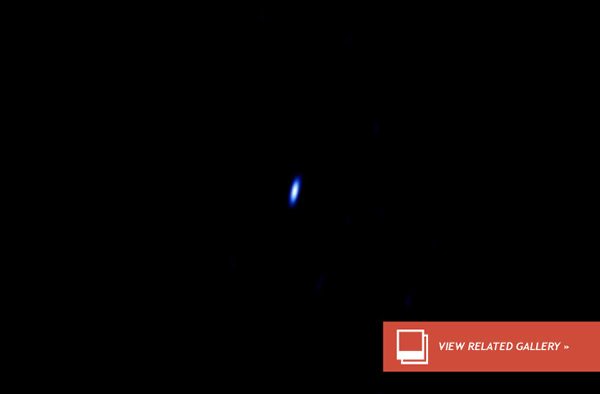Voyager 1's Glow Glimmers in Interstellar Space
One of the most iconic photographs in spaceflight history is that of Earth, seen from a distance of 4 billion miles by the outward bound Voyager 1 spacecraft. The 1990 “Pale Blue Dot” gave the world a profound realization that everybody — from all human history that has ever existed — lived on that one tiny speck in the distance, as legendary science communicator Carl Sagan remarked at the time.
Now, 23 years later, a photograph of another “pale blue dot” has been released by NASA — the faint signal from Voyager 1′s radio transmitter reaching us from interstellar space after traveling 11.5 billion miles from Earth.
Last week, NASA confirmed that Voyager 1 had officially left the solar system’s heliosphere, escaping from the heliopause and entered interstellar space, the first man made object to leave the sun’s domain. Therefore, this pale blue radio speck is the first man made radio signal ever to be received from interstellar space.
The image, that was captured by the Very Long Baseline Array (VLBA) on Feb. 21, was released to celebrate Voyager 1 entering the interstellar medium.
According to NASA, the signal being generated by Voyager 1 is very weak. The spacecraft’s main radio transmitter generates just 22 watts — the approximate radiated power of a refrigerator light bulb.
But to a huge radio array like the VLBA, Voyager 1′s signal is easily detectable as a faint radio glimmer in the darkness of the interstellar ocean.
“They were able to see a blue speck,” Suzanne Dodd, Voyager’s project manager at NASA’s Jet Propulsion Laboratory, Pasadena, Calif., said during a news conference Thursday. “And this image represents the Voyager radio signal as seen by the world’s most sensitive ground-based telescope. It’s just a speck in amongst a sea of darkness.”
It is estimated that Voyager 1′s dwindling power supply — generated by three radioisotope thermoelectric generators (RTGs) — will only allow for the spacecraft’s science instruments to be powered up until 2020 and then by 2030, the mission will go silent and Voyager 1′s faint radio glimmer will be extinguished for good.(Sep 16, 2013 06:35 AM ET // by Ian O'Neill)












